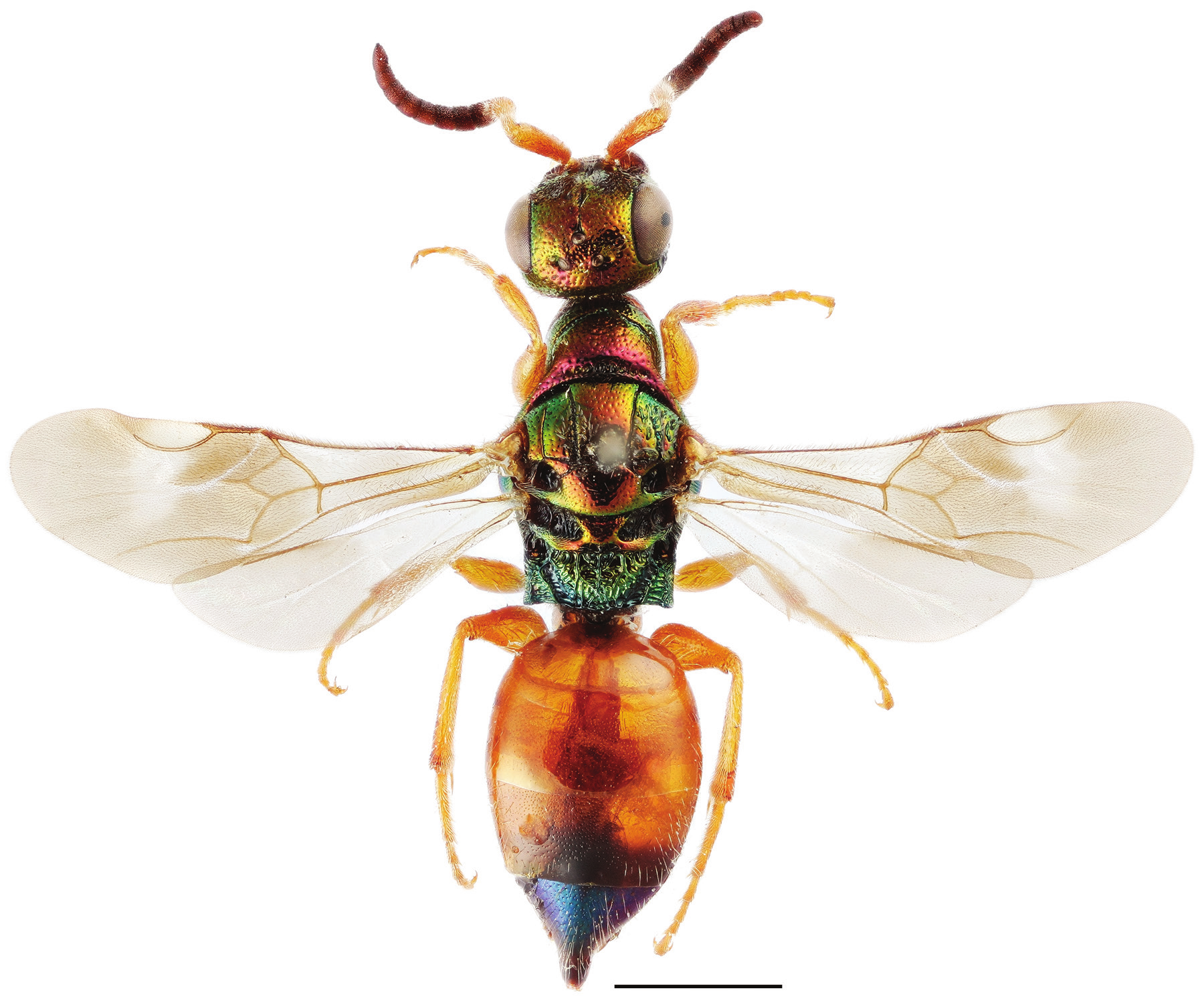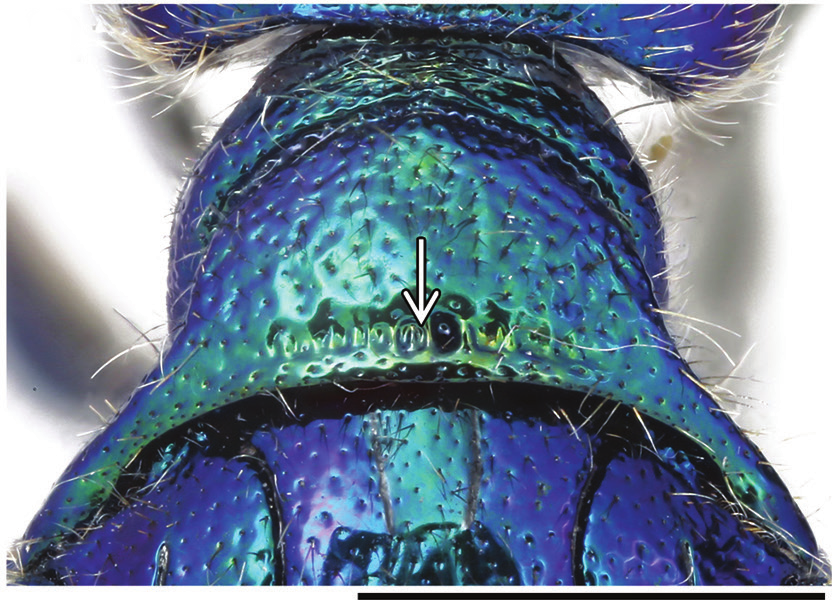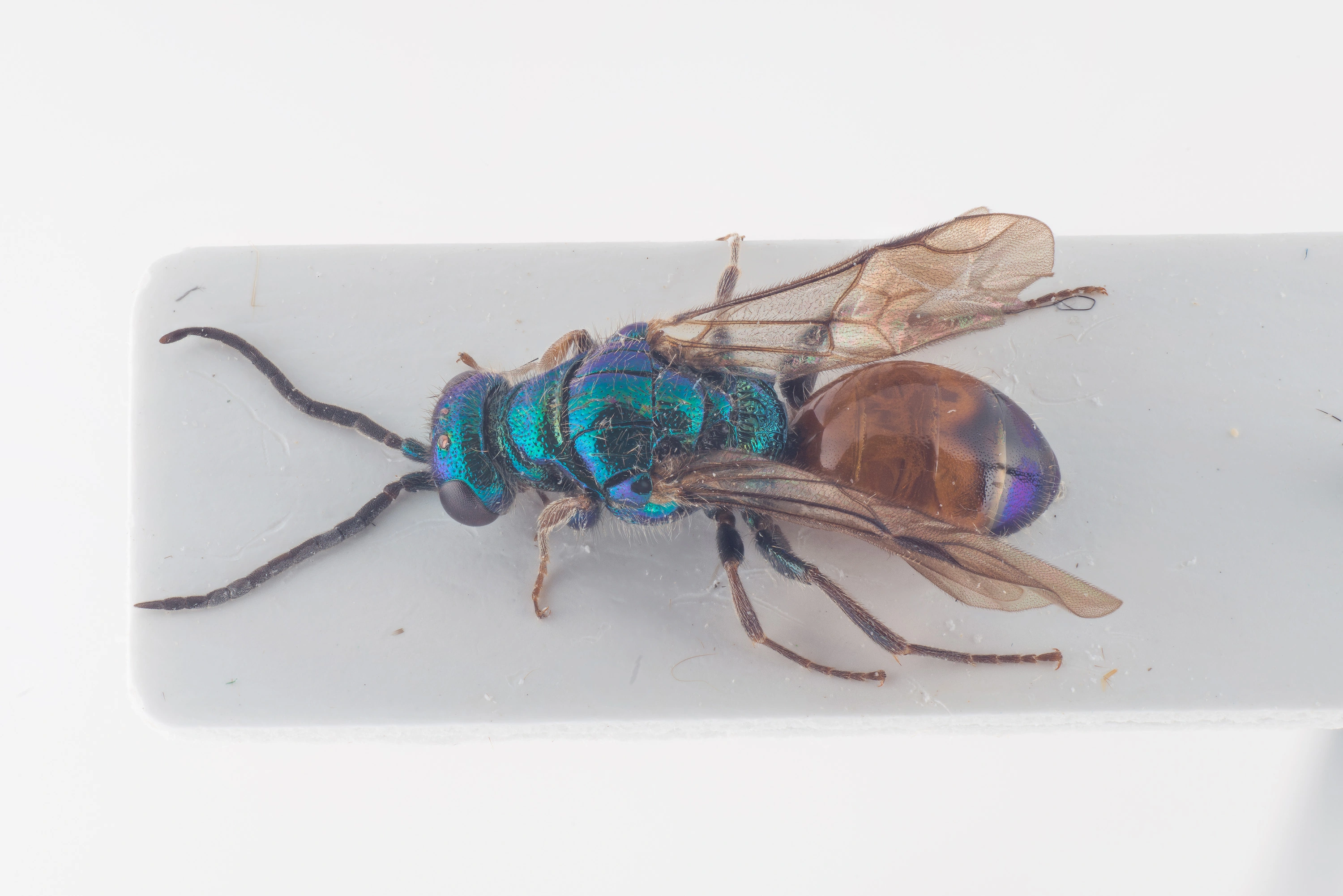Cleptes semiauratus
Figure 11
Cleptes semiauratus ♀. Scale 1 mm.
A relativey rare species, which is a cleptoparasite on sawflies living in shrubs and meadows. The genus is easy to recognize by color patterns and morphology. Cleptes semiauratus can be distinguished from the closely related C. nitidulus and C. semicyaneus by the punctured furrow along the basis of pronotum.
- Innhold
- Diagnosis
- Distribution
- Biology
Diagnosis
Figure 12
Pronotum, dorsal view: Cleptes semiauratus ♂
Length 5–8 mm.
Both sexes differ from C. nitidulus and C. semicyaneus by having a transverse foveate furrow posteriorly on the pronotum (Figs 11, 12). The female differs also by its metallic golden red head, pronotum, mesoscutum and mesoscutellum (Fig. 11), and distinctly banded wings (Fig. 11). The head and mesosoma of the male are entirely metallic blue-green. The metasoma is anteriorly non-metallic red and posteriorly black with blue reflections in both sexes (Fig. 11).
Distribution
Denmark, Estonia, Finland, Latvia, Lithuania, Norway, Sweden. Relatively rare.
Trans-Palearctic/Holarctic? The general distribution is poorly known due to confusion of C. semiauratus with C. striatipleuris Rosa, Forshage, Paukkunen & Soon, 2015 (= C. semiauratus sensu Lepeletier, 1806) by several authors (Rosa et al. 2015). According to Móczár (2001), C. semiauratus has been found in the Palearctic, Nearctic and Oriental Regions (Sumatra). In the Nearctic and Oriental Regions the species has probably been accidentally introduced (Kimsey and Bohart 1991).
Be aware that the records present in the GBIF map may be misleading for some countries due to unrevised data sets or missing information.
GBIF Taxon: Cleptes semiauratus (Linnaeus, 1761)Biology
Habitat: forest margins and clearings, gardens and parks.
Flight period: June to August.
Host: Endelomyia aethiops (Gmelin), Euura ribesii (Scopoli) and Pristiphora incisa (Lindqvist) (Tenthredinidae) (Alfken 1915, Burger and Sobczyk 2011, V. Vikberg, pers. obs.). Several other tenthredinid sawfly species reported as hosts for C. semiauratus might actually represent hosts of C. striatipleuris.


